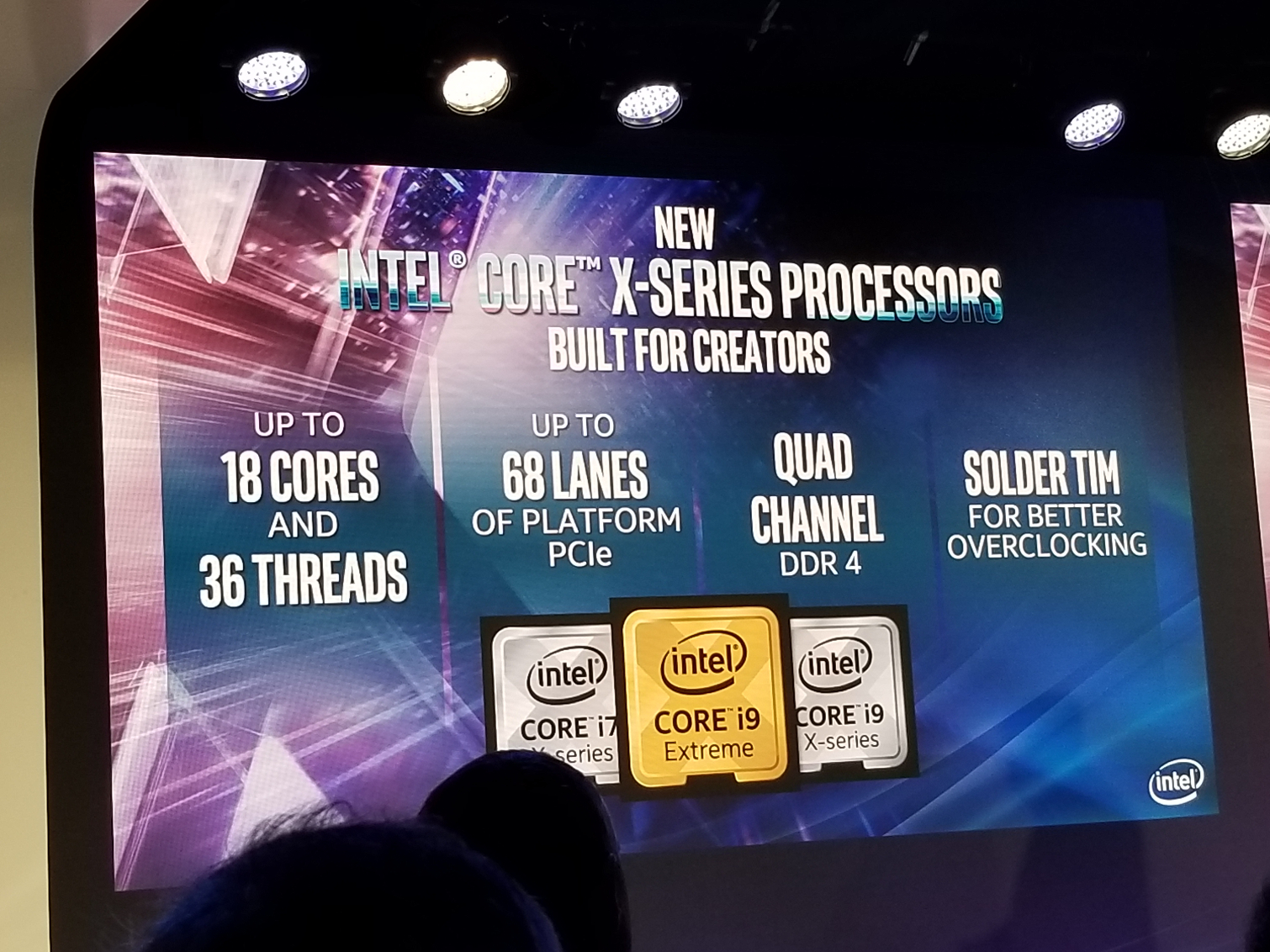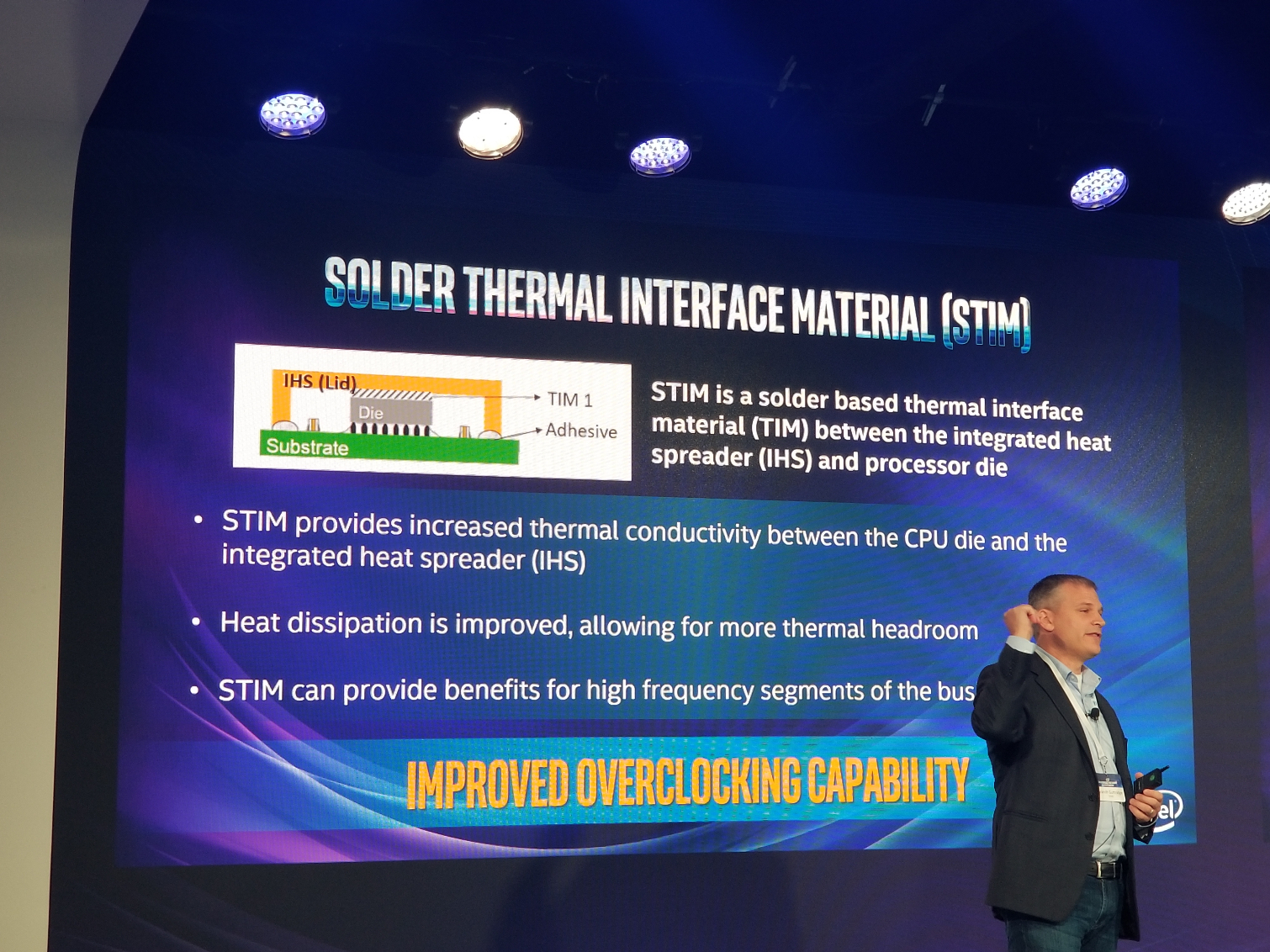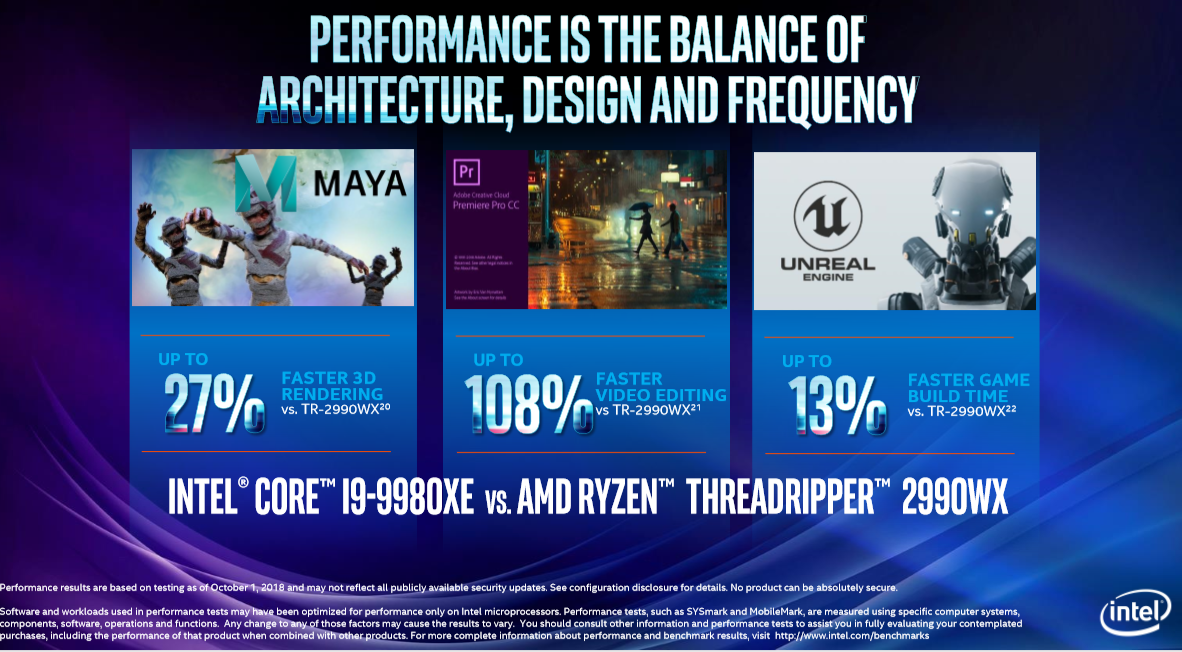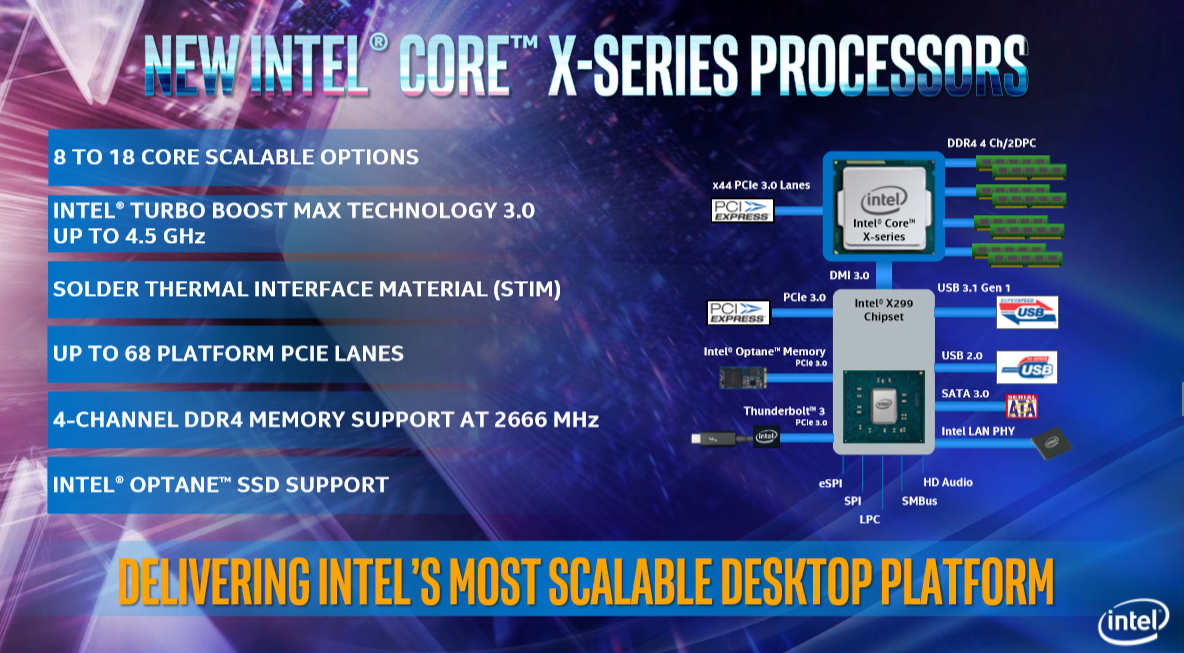Intel Announces X-Series Basin Falls Refresh Processors, Up to 18 Cores
Intel announced its Basin Falls Refresh here at its Fall Desktop Launch Event in New York. The new processors drop into the Intel's High End Desktop (HEDT) platform for enthusiasts, content creators, and prosumers. The new processors slot into existing X299 motherboards.
As expected, the new processors come with increased clock speeds, but retain similar core counts across the board. Intel has, however, announced the details of its 28-core W-3175X processor that will serve as the new flagship processor of its portfolio. That unlocked Xeon model requires a different chipset than the Basin Falls processors. You can read more details of Intel's 28-core processors here.
The new X-Series processors all feature 40 PCIe 3.0 lanes and stretch from eight cores up to 18 cores and 36 threads. Like the existing models, the new processors support quad-channel DDR4. The processors are fabbed on the 14nm++ node.
Intel also replaced its thermal grease with Solder TIM to improve the thermal transfer efficiency between the heatspreader and the die. This important step forward should improve overclocking performance for those on the hunt for extreme performance, while also improving thermal performance during typical stock operation, which will improve overall performance by allowing the processors to operate in Turbo Boost more frequently and then maintain the heightened clock speeds for longer periods of time.
The new processors ship in November. We've included the lineup of existing X-Series processors below and will add more information as it becomes available.
Like the previous-gen models, the new X-Series processors come with the mesh architecture.
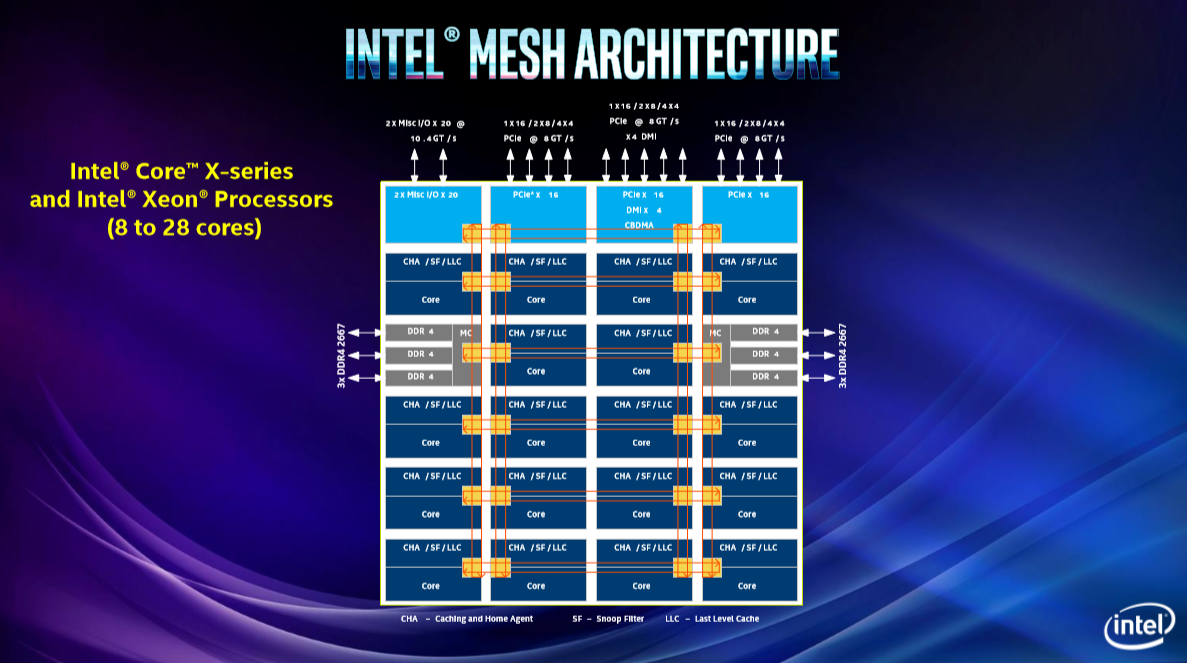
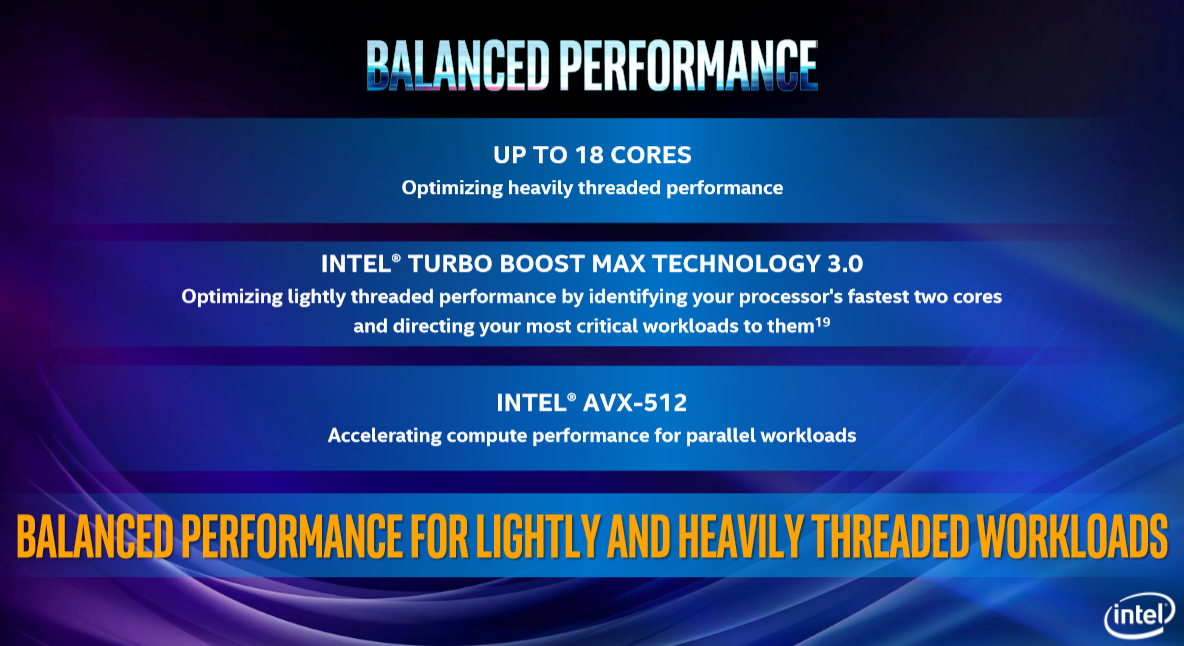
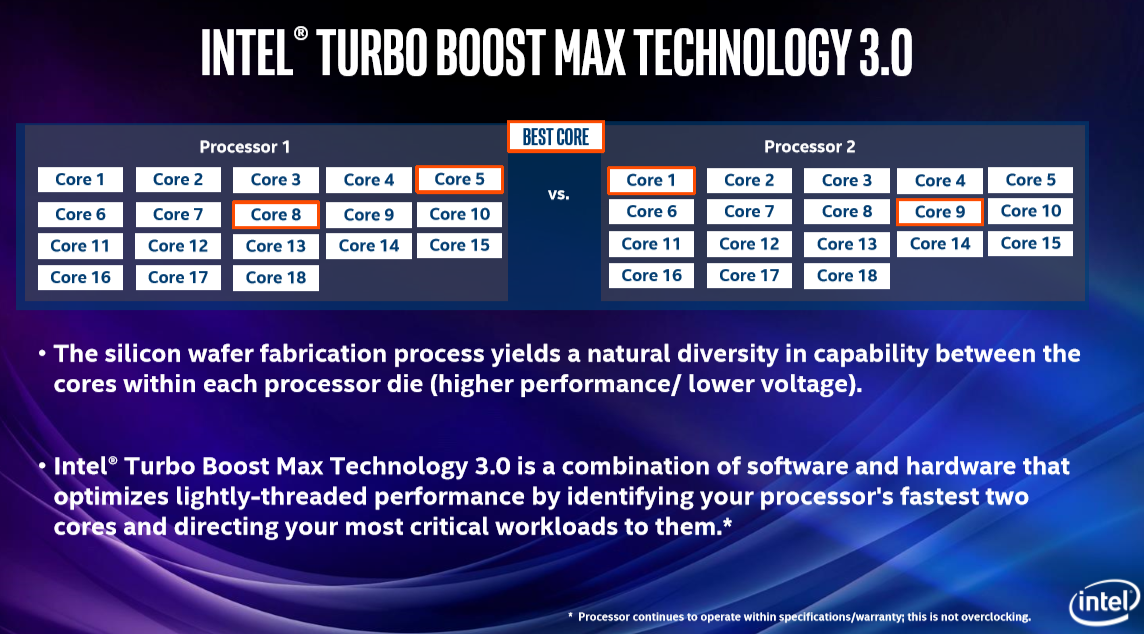
Intel shared a few performance benchmarks compared to AMD's Ryzen Threadripper 2990WX, which you can see below.
Get Tom's Hardware's best news and in-depth reviews, straight to your inbox.
Basin Falls
| Row 0 - Cell 0 | Cores /Threads | Base / Boost (GHz) | L3 Cache (MB) | PCIe 3.0 | DRAM | TDP | MSRP | Price Per Core |
| TR 2990WX | 32 / 64 | 3.0 / 4.2 | 64 | 64 (4 to PCH) | Quad DDR4-2933 | 250W | $1799 | $56 |
| TR 2970WX | 24 / 48 | 3.0 / 3.2 | 64 | 64 (4 to PCH) | Quad DDR4-2933 | 250W | $1299 | $54 |
| Row 3 - Cell 0 | Row 3 - Cell 1 | Row 3 - Cell 2 | Row 3 - Cell 3 | Row 3 - Cell 4 | Row 3 - Cell 5 | Row 3 - Cell 6 | Row 3 - Cell 7 | Row 3 - Cell 8 |
| Core i9-7980XE | 18 / 36 | 2.6 / 4.4 | 24.75 | 44 | Quad DDR4-2666 | 140W | $1999 | $111 |
| TR 2950X | 16 / 32 | 3.5 / 4.4 | 32 | 64 (4 to PCH) | Quad DDR4-2933 | 180W | $899 | $56 |
| TR 1950X | 16 / 32 | 3.4 / 4.4 | 64 | 64 (4 to PCH) | Quad DDR4-2667 | 180W | $750 | $47 |
| Core i9-7960X | 16 / 32 | 2.8 / 4.4 | 22 | 44 | Quad DDR4-2666 | 140W | $1699 | $106 |
| TR 2920X | 12 / 24 | 3.5 / 4.3 | 32 | 64 (4 to PCH) | Quad DDR4-2933 | 180W | $649 | $54 |
| TR 1920X | 12 / 24 | 3.5 / 4.2 | 64 | 64 (4 to PCH) | Quad DDR4-2667 | 180W | $399 | $33 |
| Core i9-7920X | 12 /24 | 2.9 / 4.4 | 16.50 | 44 | Quad DDR4-2666 | 140W | $1199 | $100 |
| Core i9-7900X | 10 / 20 | 3.3 / 4.3 | 13.75 | 44 | Quad DDR4-2666 | 140W | $999 | $99 |
| Core i7-8700K | 6 / 12 | 3.7 / 4.7 | 12 | 16 | Dual DDR4-2666 | 95W | $359 | $60 |
| Ryzen 7 2700X | 8 / 16 | 3.7 / 4.3 | 16 | 16 | Dual DDR4-2933 | 105W | $329 | $41 |
Breaking News, more to come...

Paul Alcorn is the Editor-in-Chief for Tom's Hardware US. He also writes news and reviews on CPUs, storage, and enterprise hardware.
-
jimmysmitty Few corrections:Reply
1. First paragraph states they will slot into existing X399 motherboards. You mean X299. X399 is not out yet but might be launched today as well. I am a bit annoyed at AMD for their chipset naming as they knew Intel was using a similar naming scheme.
2. Third paragraph starts with "Te"". I am sure you meant "The"
One other thing is I wish the PCIe counts would be clarified. AMD has 64 on the CPU however 4 are used for communication with the PCH leaving 60 for slots and M.2 ports. Then there is 8 on the PCH which are PCIe 2.0 for other expansions like Ethernet etc.
Intels X series has 44 on the CPU but also has 24 on the PCH and all are PCIe 3.0. -
jimmysmitty Reply21384734 said:those new processors actually state 68 pcie lanes right in the photo
I know that but its never stated on sites. There is a difference though. The CPU lanes are the ones typically used for PCIe graphics while the PCH get relegated to PCIe x1/x4 slots, NVMe, Ethernet etc. -
Blas "Intel also replaced its thermal grease with Solder TIM to improve the thermal transfer efficiency between the heatspreader and the die. This important step forward..."Reply
Or step backwards, depends on how our memory works... I seem to remember a time when that was the usual! -
WyomingKnott People have been clamoring for solder TIM for so long, this is good to see. Will this abate the rash of delidding accidents? I hope so.Reply -
cryoburner Solder is good and all, but why does Intel's 18-core processor still cost significantly more than a 32-core Threadripper? It might offer slightly more performance per core, but in many of the heavily-multithreaded tasks that these CPUs are intended for, that massive core deficit is going to place it behind the competition.Reply -
jimmysmitty Reply21396550 said:Solder is good and all, but why does Intel's 18-core processor still cost significantly more than a 32-core Threadripper? It might offer slightly more performance per core, but in many of the heavily-multithreaded tasks that these CPUs are intended for, that massive core deficit is going to place it behind the competition.
The market that that CPU is geared towards allows Intels clock speed and IPC advantage to shine. The area where it would benefit AMD the most is servers more than anything. Most consumer software and tasks wont take advantage of that many cores.
The other side is the Basin Falls refresh. The 7820X will become the 9800X with 8/16 but also more L3 cache (16.5MB) 44 PCIe 3.0 lanes and a 200MHz base clock boost. As well the 9980XE will get a 500MHz base clock boost and a 100MHz turbo boost so it will widen the gap until AMDs next Threadripper.
What AMD did is because they coudn't match the per core performance and clock speed is they added value by throwing more cores at it. I mean I would love to have a 32 core system but there just isn't an advantage to it. If I went with the LGA 2011 platform I would stick to the 9800X. I just don't see an advantage to anything minus servers or high end workstations for more cores.
-
cryoburner Reply
If someone cares so much about lightly-threaded performance, they would likely be better off spending a fraction of the amount on a processor with fewer, higher-clocked cores, not a $2,000 18-core processor with limited boost clocks. The only reason someone should have a CPU with that many cores is if heavily multithreaded performance is most important to them, and if that's the case, the Threadrippers should offer better performance per dollar.21397142 said:The market that that CPU is geared towards allows Intels clock speed and IPC advantage to shine. The area where it would benefit AMD the most is servers more than anything. Most consumer software and tasks wont take advantage of that many cores. -
jimmysmitty Reply21397216 said:
If someone cares so much about lightly-threaded performance, they would likely be better off spending a fraction of the amount on a processor with fewer, higher-clocked cores, not a $2,000 18-core processor with limited boost clocks. The only reason someone should have a CPU with that many cores is if heavily multithreaded performance is most important to them, and if that's the case, the Threadrippers should offer better performance per dollar.21397142 said:The market that that CPU is geared towards allows Intels clock speed and IPC advantage to shine. The area where it would benefit AMD the most is servers more than anything. Most consumer software and tasks wont take advantage of that many cores.
Per dollar? Maybe. However there is also software optimizations which for years professional programs have been optimizing for Intel as AMD didn't offer viable competition. There is also platform benefits.
I am not justifying it over AMD. AMD does offer more cores per dollar. However when a program benefits from higher clock speeds and its a professional environment they are not worrying about $2000 for a CPU when that extra time could amount to more.

